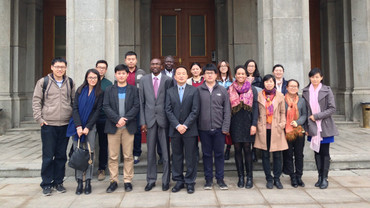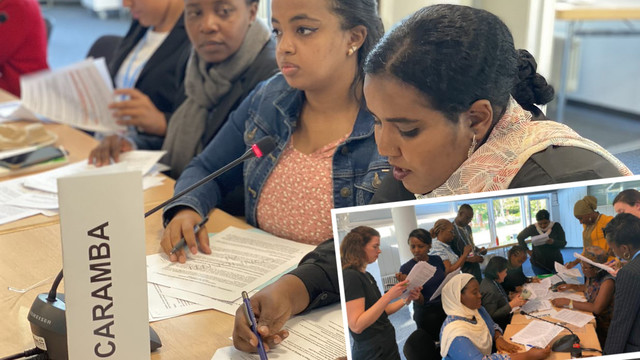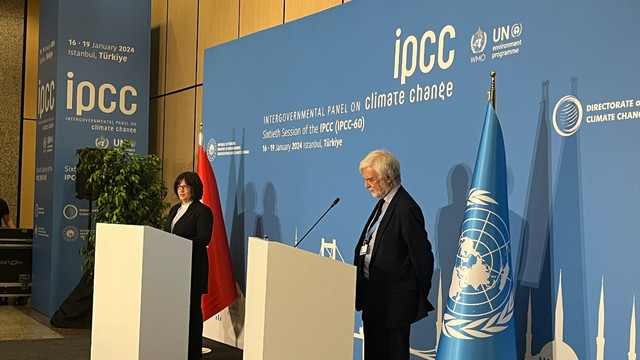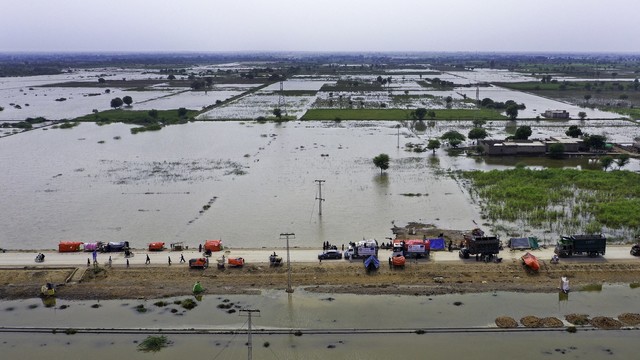Climate diplomacy in the age of Trump: updating our theory of change
We're incorporating feedback to sharpen our theory of how the Least Developed Countries can extend their influence in international climate change decision making.


The Least Developed Countries Group played a key role in the High Ambition Coalition that successfully pushed for a 1.5-degree climate goal in the Paris Agreement (Photo: Matt Wright/IIED)
In 2017, we developed a theory of change exploring how the world's poorest countries could increase the influence of their climate diplomacy. Our theory maps the actions Least Developed Countries (LDCs) can take to have more direct influence in international climate decision making – whether that be through forming alliances to reduce greenhouse gas emissions, planning adaptation strategies with regional partners or advocating foreign publics to act urgently.
But would our theory work in practice? We asked for feedback from negotiators, practitioners, academics and the public, asking:
- Is a theory of change approach useful to supporting governments in their climate diplomacy?
- Do the four spheres of influence in our theory make sense for achieving change?
- Do our assumptions hold true? What are we overlooking?
We are using their inputs to shape our thinking as we re-examine how the LDCs can make climate diplomacy work for them.
What did the feedback tell us?
Countries need an agile diplomatic strategy now more than ever
Doug Crawford-Brown, formerly of the Centre for Climate Change Mitigation Research at Cambridge University, commented that "effective diplomacy requires an evolving strategy – giving nations the ability to change course, should reality differ from what was expected, or should the diplomatic landscape dramatically shift."
The volatile backdrop of the recent past is a case in point. The world witnessed the adoption of the Paris Agreement – the first truly universal, legally-binding climate treaty – and the election of a climate denier to the office of US president in the space of a single year. These are just two examples that make the strong case for effective and agile climate diplomacy.
Our theory provides a logical decision-making framework
We asked whether a theory of change helps government actors think about how and where to invest resources to further their engagement in climate diplomacy. Overall our feedback told us that it does.

Theory of change for increasing the influence of Least Developed Countries' climate diplomacy. The diagram is also available on IIED's Flickr site, where users can zoom in
Camilla Born, of climate think tank E3G, said the theory provided a useful framework for logical decision making but – importantly – does not prescribe choices, instead empowering government agencies to make choices locally. Mamadou Honadia, a lead negotiator for Burkina Faso at the UN climate talks, also endorsed the usefulness of the tool saying that it would help government actors take decisions, especially if the theory could be adapted to a country context.
What did we learn?
In re-examining our theory of change in light of the feedback, three key points emerged:
- The importance of alliance building
Our theory lists engaging in alliances as a component of influencing international decision making. Our feedback told us to highlight its importance. Smaller countries rely on banding together in multilateral settings (forming blocs like the LDC Group). They can further their influence by forging coalitions across regions, negotiating groups and continents where positions align.
The power of alliances was clear when the LDC Group, AOSIS and EU alliance helped break the deadlock during the 2011 climate negotiations. Similarly, the High Ambition Coalition was cited as a key instigator for sealing the Paris Agreement.
- Coordination across government is key
Our theory sets out that achieving change requires strong coordination on climate change across government ministries and departments. The feedback endorsed this: no matter how persuasive the individual diplomat, a cross-government approach is much more influential.
According to Prakash Mathema, former chair of the LDC Group, diplomats within ministries of finance, foreign affairs and environment need to highlight the climate change concerns in all possible forums (trade, security, health, education, development, and so on).
On finance, these forums include multilateral development banks (MDBs) and mechanisms such as the Green Climate Fund. Born points out that linking to sources of international climate finance in our theory could demonstrate paths to influencing the shape of bilateral trade, as well as investments from MDBs and the private sector.
In order to coordinate cross-government efforts, LDCs need to convene regular meetings between concerned staff in all ministries in order to strategise, report back, share documents and agree on common messaging. IIED visiting fellow Anju Sharma suggested renaming this sphere of influence so it cuts to the chase and gets across how important national coordination is.
- Strategic public diplomacy
Our theory of change works on the premise that good public diplomacy begins at home. It highlights that engaging with national media and public events are important ways for climate diplomats to get their message out. Rosalind Goodrich, head of research communications at IIED, suggested extending this public-facing work to embrace social media and to think about the tactics needed to reach international as well as domestic audiences. Born suggested targeting media in countries or regions where there are strong economic or cultural links.
What could we add?
Our theory of change recognises several cross-cutting enabling conditions that contribute to impact. The feedback we received highlighted a few more:
- The importance of NGOs: First, us. NGOs like IIED play a role in bolstering the capacity of LDCs' ability to engage in climate diplomacy. LDCs can harness the intellectual and informational support NGOs provide to further their efforts.
- Political stability: A stable political environment with smooth transitions of power is a key enabling condition for influential foreign policy. However, transient and unpredictable domestic politics, and political instability more broadly, are prevalent in LDCs. Our theory of change should recognise this.
- Each country is different: The LDCs face common climate related challenges and have similar economic conditions. This allowed us to extrapolate parallels between their approaches to climate diplomacy into an overarching theory. But each one of the 47 LDCs is unique. The feedback encourages us to think about how our theory of change could be developed and tailored to national contexts.
IIED will continue to think through how the poorest nations can increase their influence through diplomacy. This year, we will update our theory of change and craft a strategy for helping the LDCs engage, concentrating on practical actions and recommendations.




